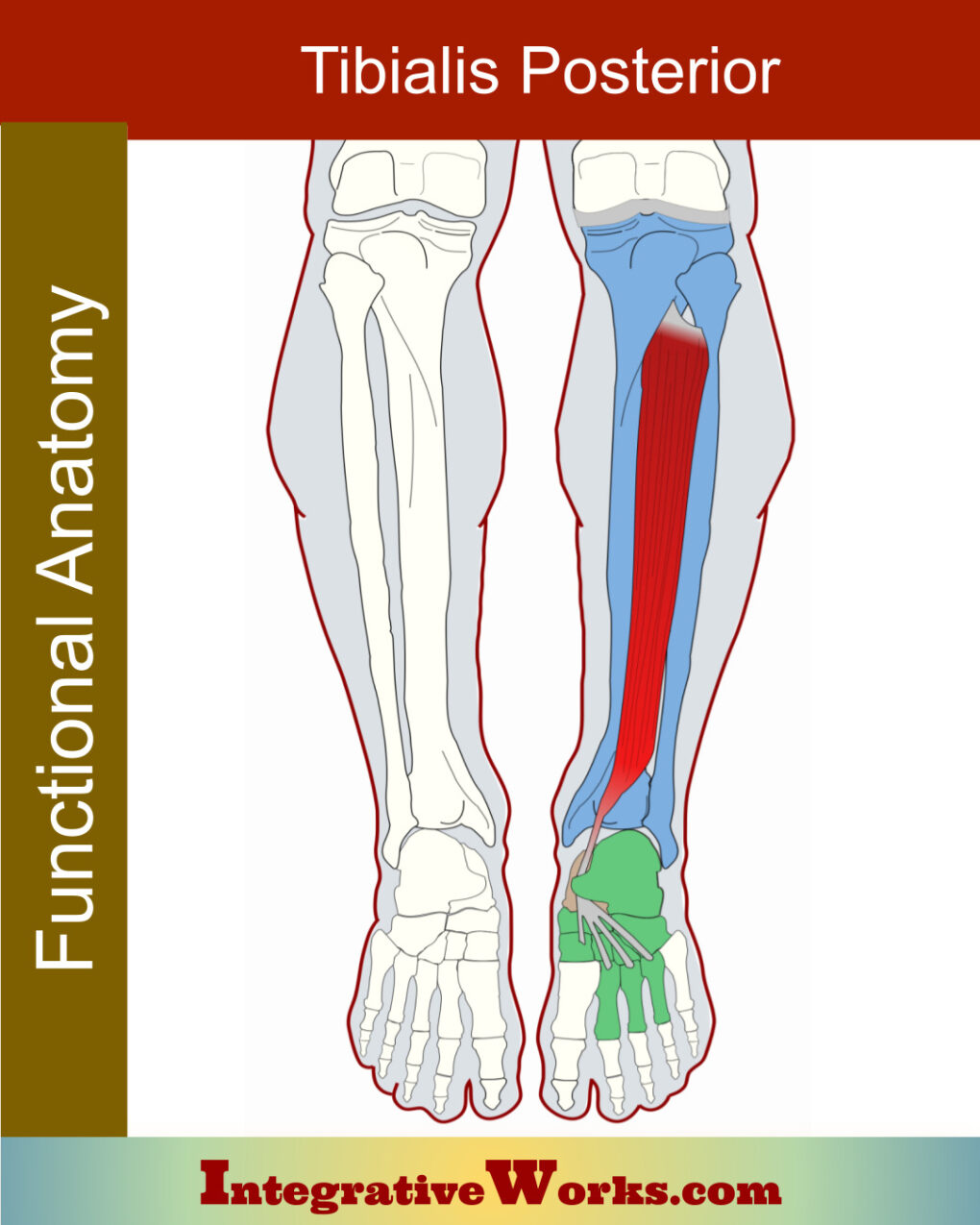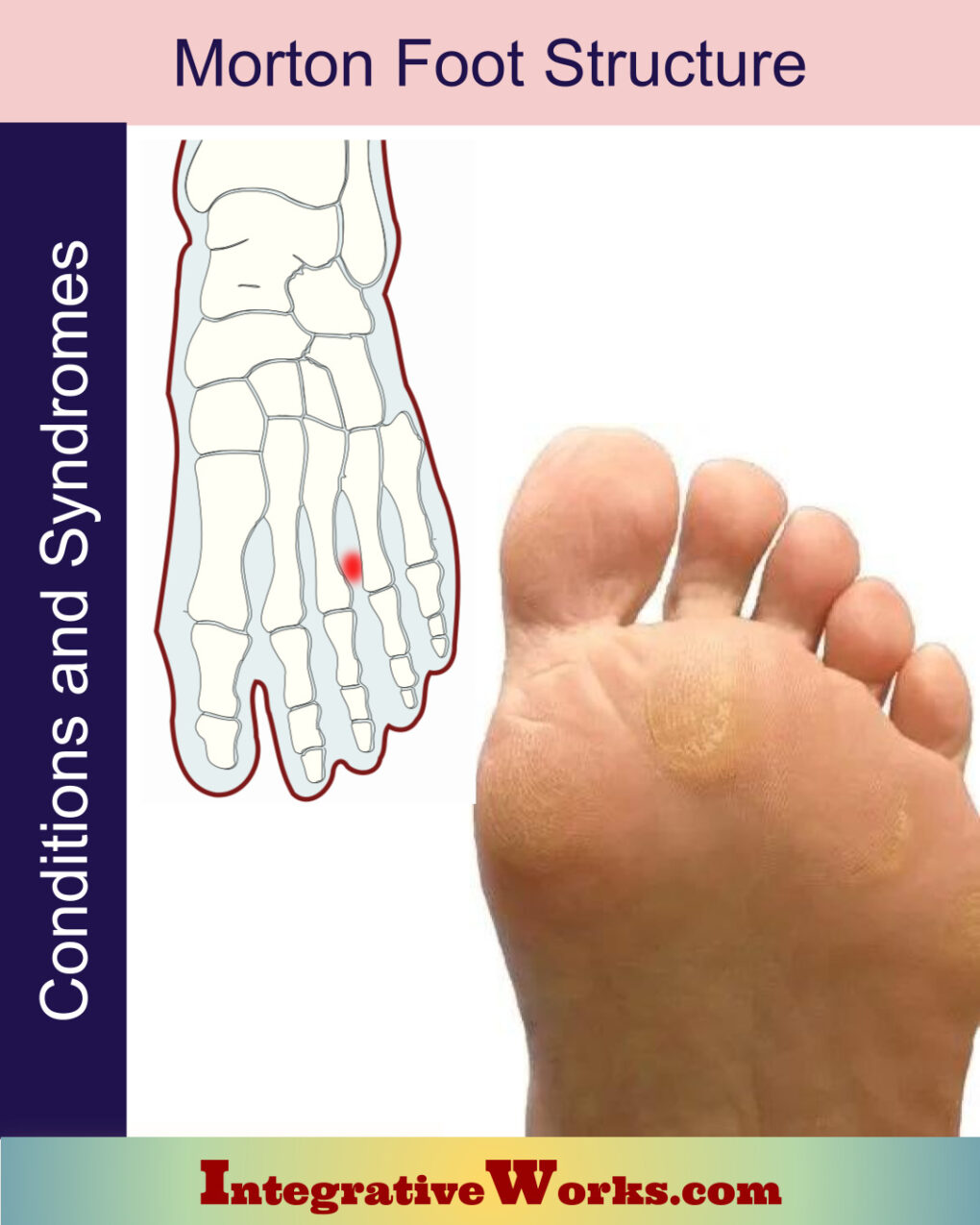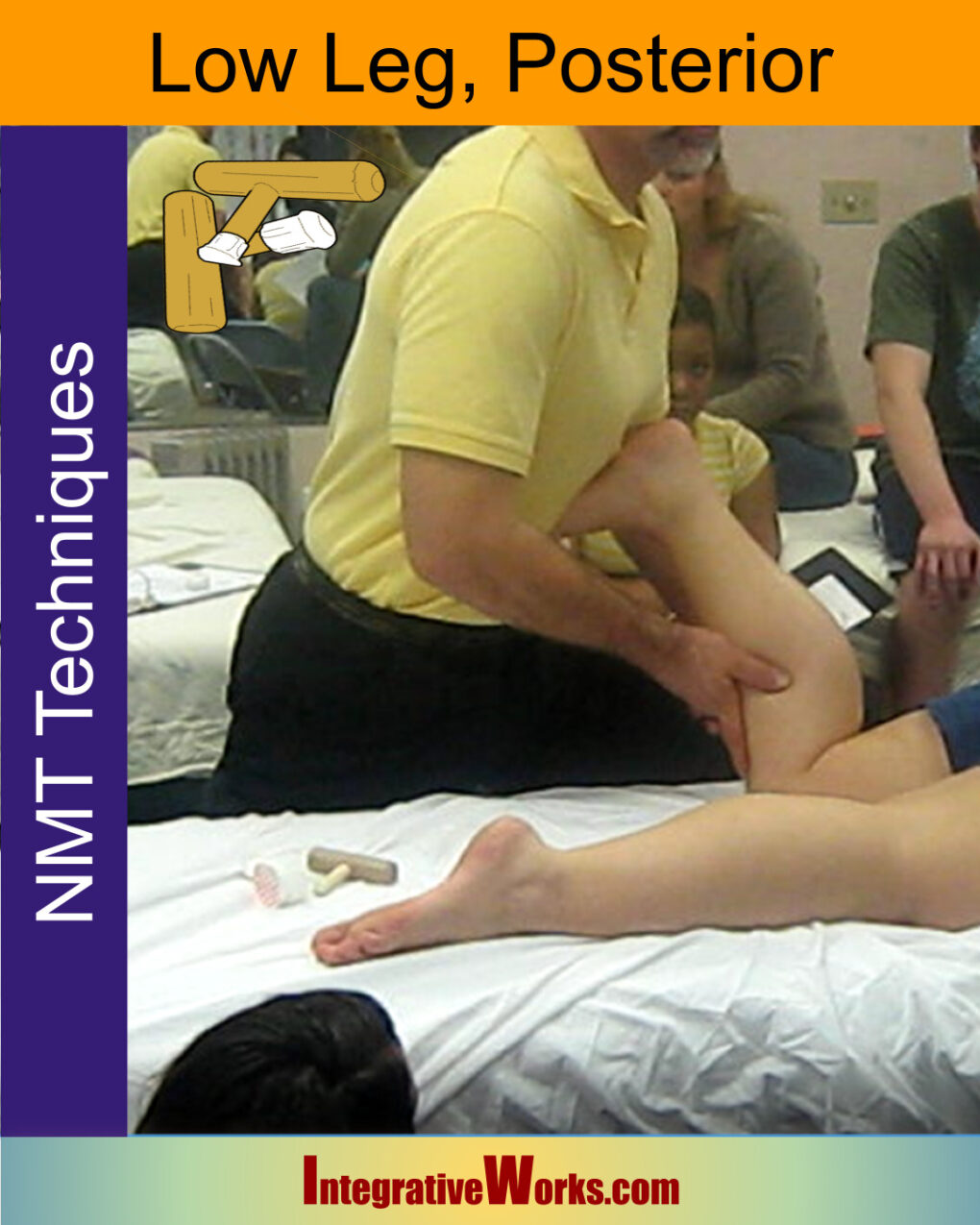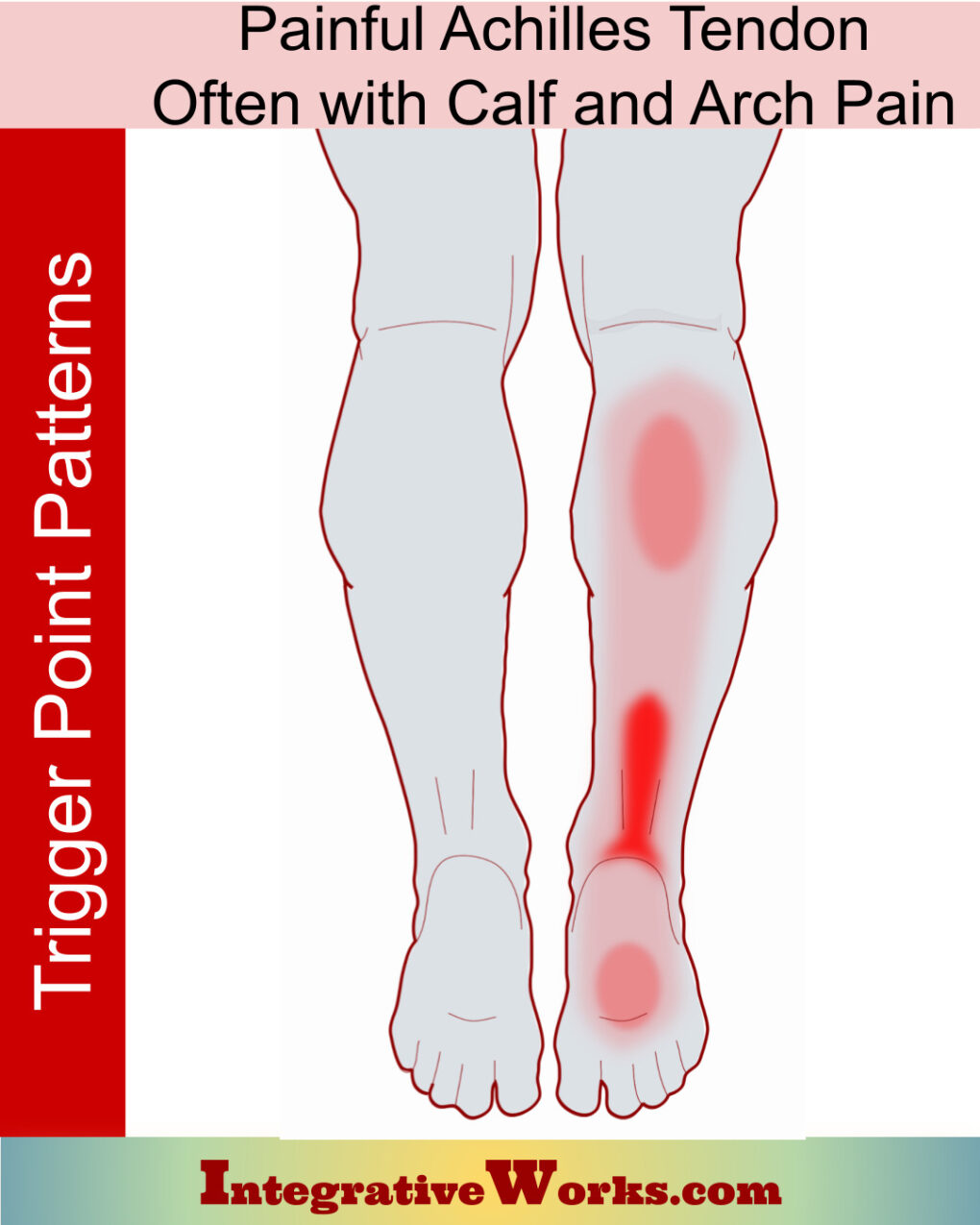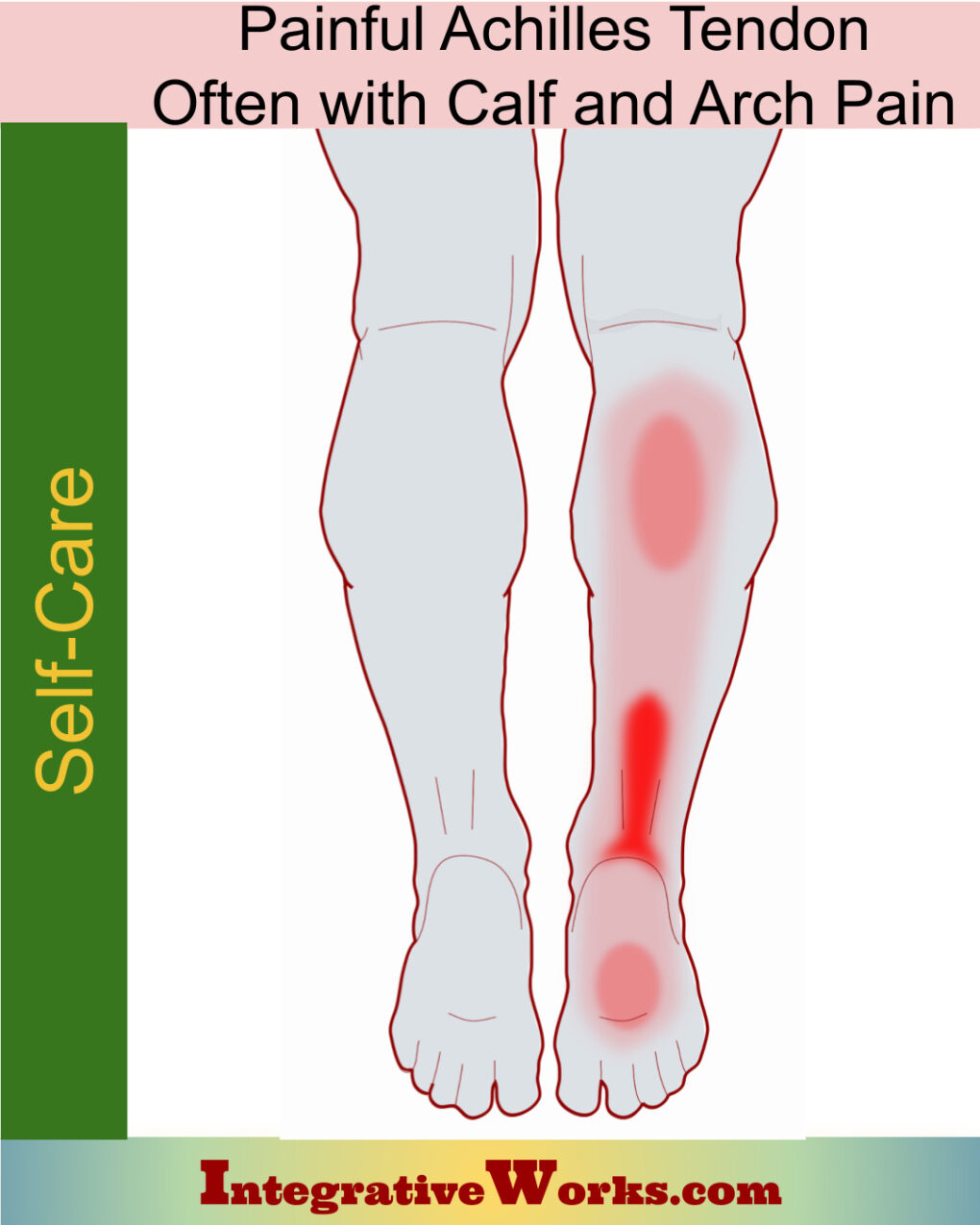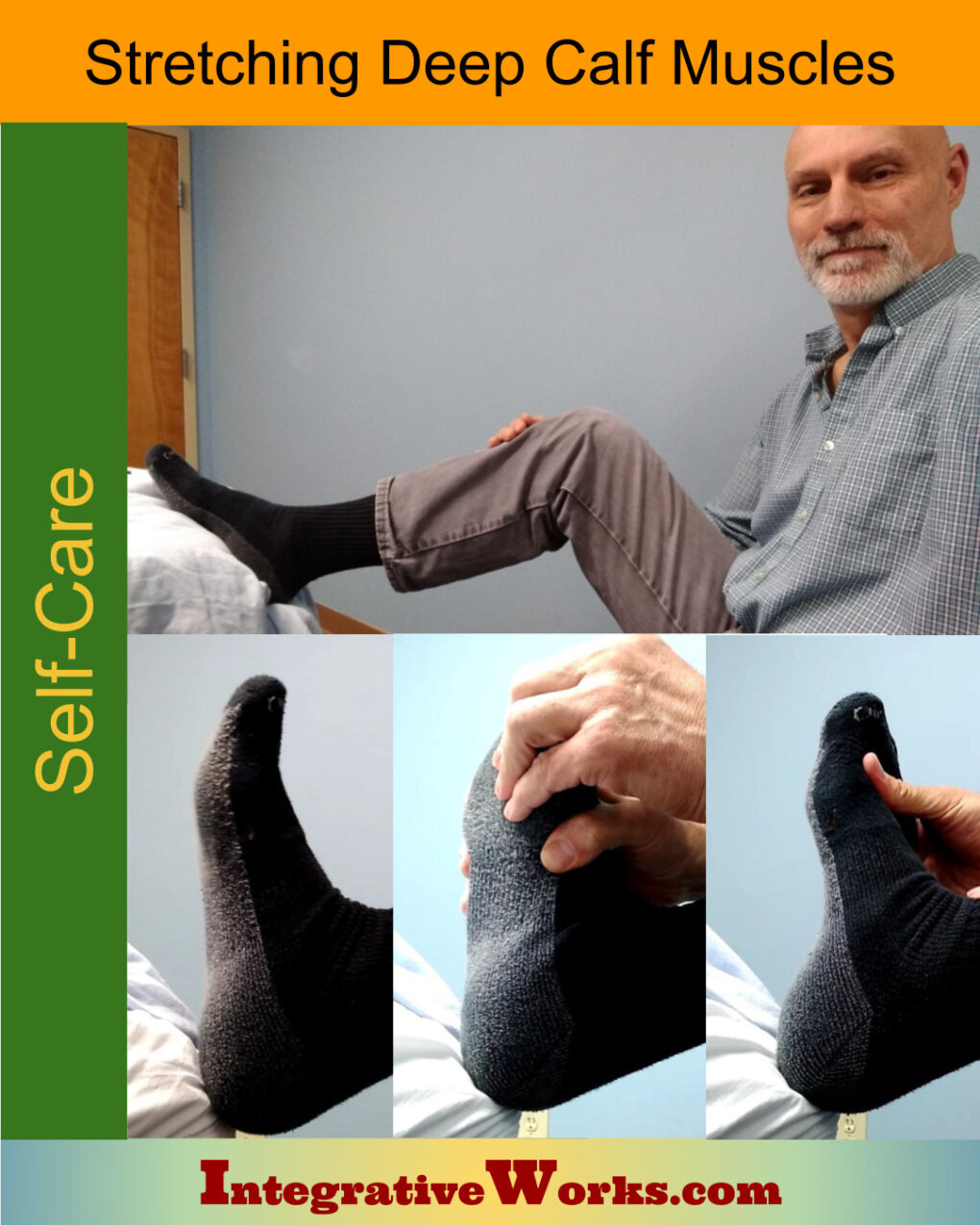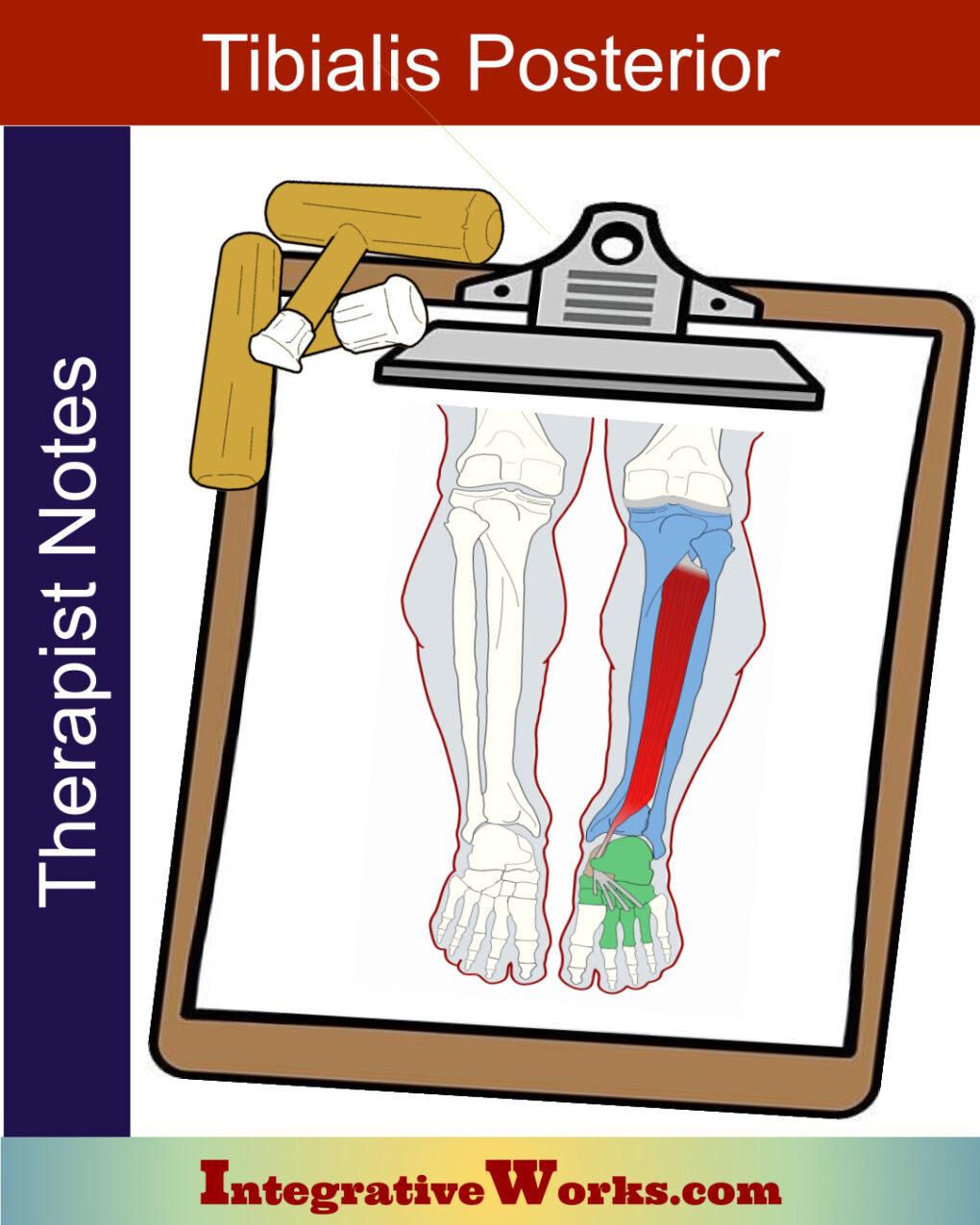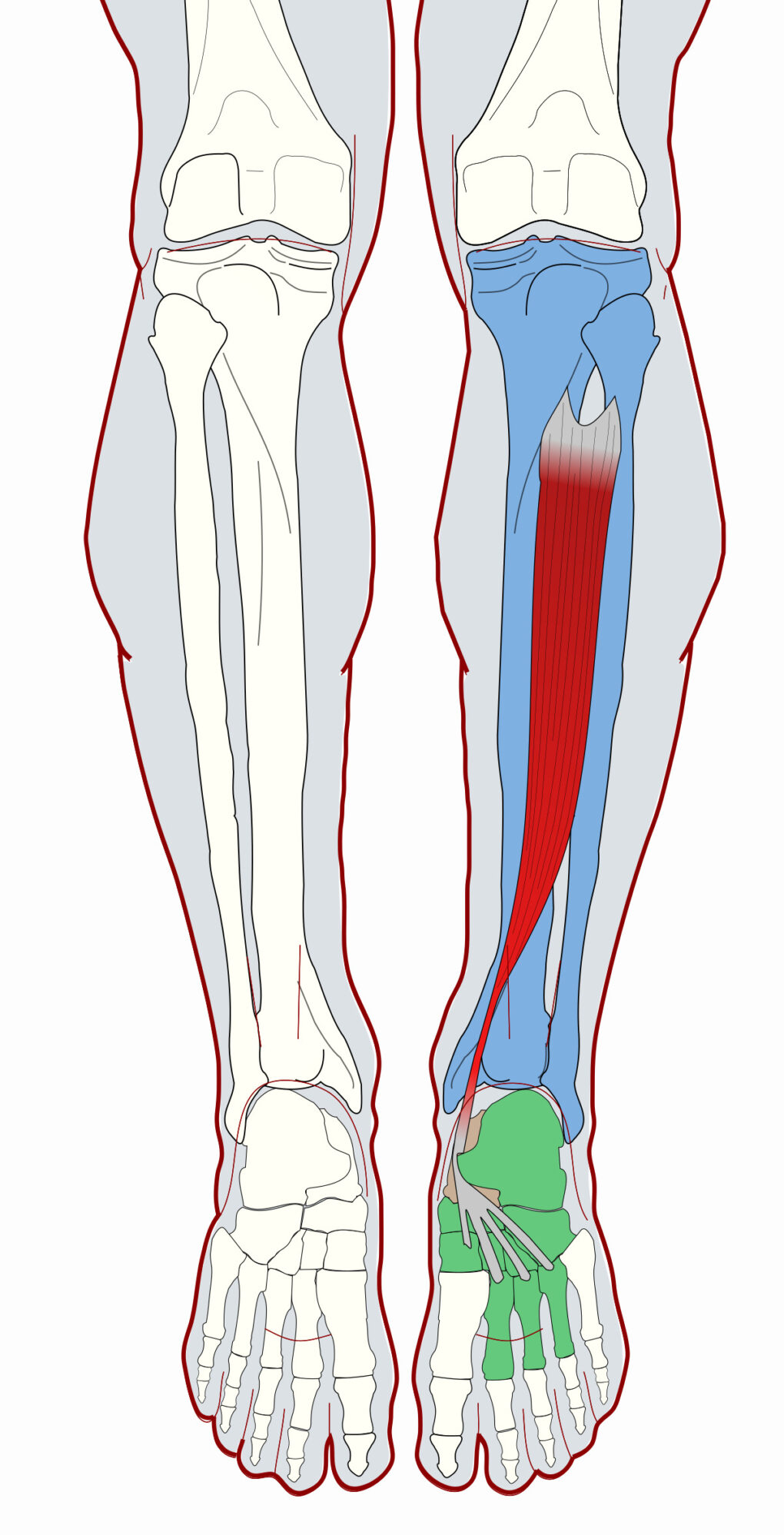
Overview
The tibialis posterior is a long muscle extending along the low leg’s deep posterior compartment. The complexity and variability of the insertion tendon complicate its anatomy. That insertion usually includes most of the bones in the foot’s arch.
Origin
- posterior tibia
- posterior fibula
- intermuscular septum
Insertion
- All tarsals except the talus
- 2-4 metatarsals
Function
- primary inverter of the foot
- assists plantar flexion
- supports the arch of the foot
Nerve
- tibial nerve (L4-S3)
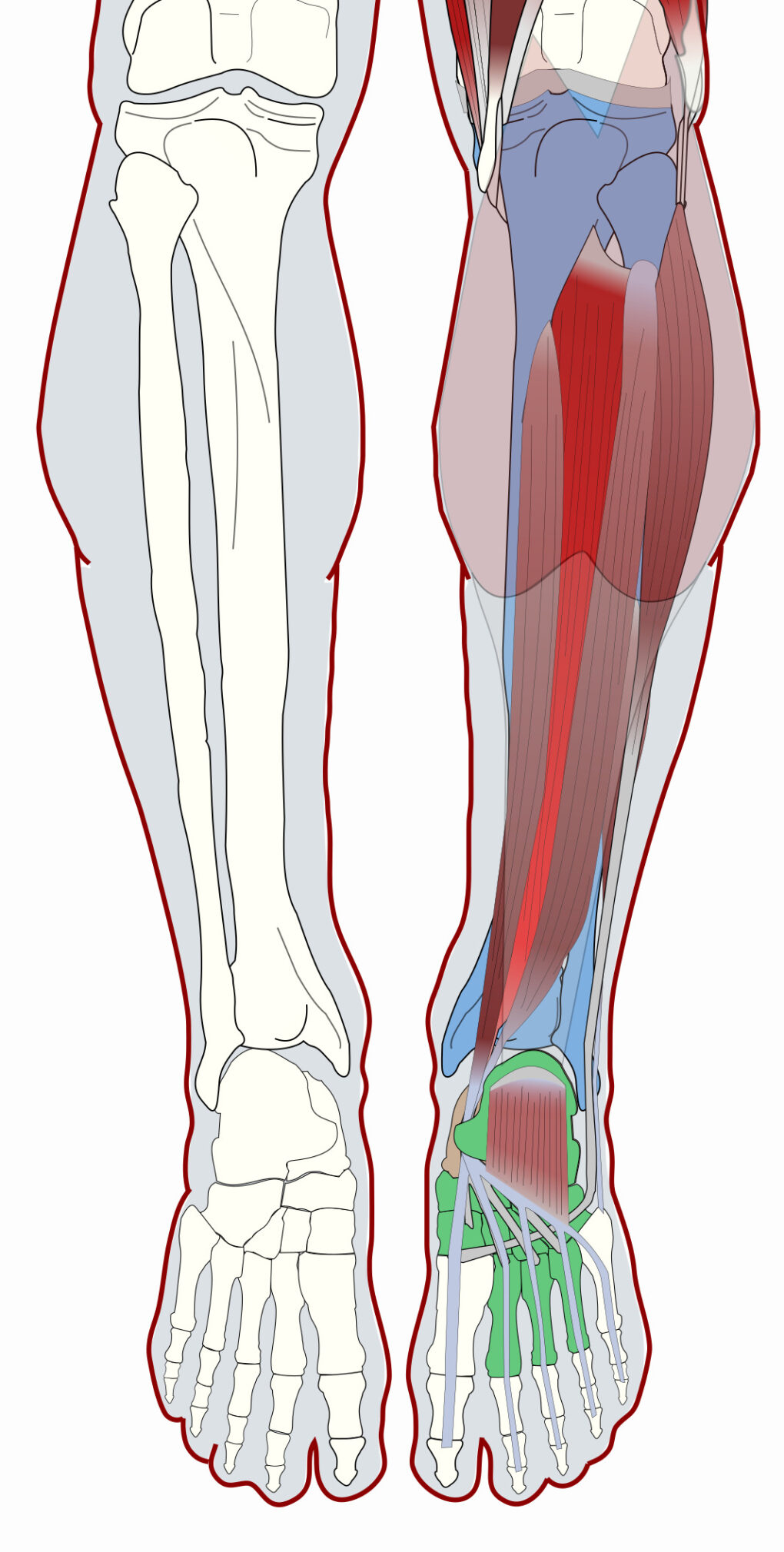
Functional Considerations
The tibialis posterior is deep to all the posterior low leg muscles.
Tibialis posterior inverts the foot through the talus-navicular joint and the talus-calcaneal joints. However, the high variability of the insertion tendon strongly impacts the function. Additionally, research indicates that tendon variability strongly contributes to flat-footedness.
Conversely, it is active in stabilizing the foot during eversion. More, it can assist in plantar flexion of the foot during eversion.
Anomalies, Etc.
This study suggests high variability of the posterior tibialis tendon and the possibility of differences according to race and gender. In support, this other study is less detailed and indicates that the insertion points are highly variable.

Morton’s Foot Structure, and The Wobbly Foot
Feet invert, which correlates with supination and turning the arch inward. Conversely, feet also evert, which correlates with pronation and turning the arch outward.
Morton’s Foot Structure creates a foot prone to invert and evert excessively. This is because the longer second metatarsal acts as a pivot that strikes before the first metatarsal. This structure causes the foot to wobble. Comparatively, other feet tend to strike on the first metatarsal in a stride with less foot rocking.
Muscles of Inversion and Eversion
The tibialis posterior is the primary inverter of the foot. It wraps around the medial ankle and attaches to most of the bones of the arch. Additionally, flexors of the toes loop through the medial ankle and assist with these functions.
At the same time, the peroneus longus is the primary everter of the foot. It wraps around the lateral ankle and attaches to the medial bones of the foot at the base of the first metatarsal and medial cuneiform. Additionally, the peroneus brevis everts the ankle.
Perpetuating ankle pain
The posterior tibialis and peroneus longus are most directly involved in stabilizing the wobbly foot. Consequently, they both create pain patterns around the ankle that are harder to resolve with Morton’s Foot Structure.
While walking, strong inverters and everters stabilize the foot. However, when those stabilizers have trigger points, Morton’s Foot Structure aggravates those muscles and generates more pain.
Related Posts
Support Integrative Works to
stay independent
and produce great content.
You can subscribe to our community on Patreon. You will get links to free content and access to exclusive content not seen on this site. In addition, we will be posting anatomy illustrations, treatment notes, and sections from our manuals not found on this site. Thank you so much for being so supportive.
Cranio Cradle Cup
This mug has classic, colorful illustrations of the craniosacral system and vault hold #3. It makes a great gift and conversation piece.
Tony Preston has a practice in Atlanta, Georgia, where he sees clients. He has written materials and instructed classes since the mid-90s. This includes anatomy, trigger points, cranial, and neuromuscular.
Question? Comment? Typo?
integrativeworks@gmail.com
Interested in a session with Tony?
Call 404-226-1363
Follow us on Instagram

*This site is undergoing significant changes. We are reformatting and expanding the posts to make them easier to read. The result will also be more accessible and include more patterns with better self-care. Meanwhile, there may be formatting, content presentation, and readability inconsistencies. Until we get older posts updated, please excuse our mess.

